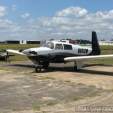How do you Take Advantage of Speed Brakes on Approaches?
-
Members Online
- 201er
- CaliDreaminMr
- SOLER
- Max3293F
- EricJ
- Culver LFA
- kowabunga
- jordanjms
- Pierre07
- MoonsterV35
- gacoon
- Tmooney
- PT20J
- Marc_B
- Vance Harral
- 231MJ
- McMooney
- JeffPug
- dkkim73
- Smiles201
- AdamJD
- Robert Hicks
- Kelpro999
- kortopates
- KSMooniac
- bowfishnn
- hubcap
- Ragsf15e
- bluehighwayflyer
- 802flyer
- SkyBound
- hphillips
- Red Leader
- N201MKTurbo
- IFLYIFR


Recommended Posts
Join the conversation
You can post now and register later. If you have an account, sign in now to post with your account.